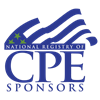
eLearning Courses

eLearning for Continuing Professional Development
Education is at the heart of the MRC’s mission to make eCommerce better for everyone. One of the goals of the Merchant Risk Council is to serve as an educational resource for payments and fraud prevention professionals of all levels. MRC’s eLearning courses help make that possible on a global scale.
The wide selection of accredited courses allows professionals to learn at their convenience, receive certificates and earn continuing professional education (CPE) credits upon course completion. CPE credits may be applied to a variety of professional certifications, including Certified Payments and Fraud Prevention Professional (CPFPP), Certified Fraud Examiner (CFE), and others.
MRC Education eLearning is ideal for:
- Professionals who wish to revisit the fundamentals of payments and fraud prevention
- Individuals looking to enhance their professional credentials
- Managers looking for industry-specific training materials
- Anyone interested in exploring a career in this dynamic industry
- Categorize and define key stakeholders in the payments ecosystem
- Understand the workings of cash, checks, and bank transfers in payment processes
- Identify and differentiate between various payment cards
- Comprehend the processes involved in mobile payments, digital and e-wallets, and cryptocurrencies
- Understand the steps of the transaction lifecycle, including authorization, clearing, and settlement, along with their respective roles
- Define payment processing fees and identify global settlement protocols
- Understand the need for security in payments and the technologies used in fraud protection, including encryption and tokenization
- Identify and explain authentication protocols and their role in securing payments
- Define key regulatory bodies and organizations involved in setting payments standards
- Understand key regulations and standards, such as PSD2, and their impacts on the payments industry
- Identify the challenges and opportunities technology presents from a regulatory perspective
- Identify emerging trends in payments
- Explain what the future of payments may hold
Members: $0 USD
Non-Members: $450 USD
Log in to the member portal to access exclusive pricing
- Define online fraud
- Identify types of fraudsters
- Categorize types of online fraud attacks
- Understand the nuances of marketplace fraud
- Analyze how fraudsters use address manipulation techniques
- Define social engineering attacks and victim assisted fraud
- Categorize types of customer fraud
- Identify the role of a fraud analyst and the techniques used to evaluate fraud
Members: $0 USD
Non-Members: $450 USD
Log in to the member portal to access exclusive pricing
- Have a clear definition of First-Party Misuse and Compelling Evidence 3.0 Criteria
- Know how to establish a historical footprint
- Understand the Merchant Matching Process in depth
- Be well-versed with Pre-Dispute and Post-Dispute process flows
- Recognize the benefits of Compelling Evidence 3.0 for merchants, issuers, and acquirers
Members: $75 USD
Non-Members: $150 USD
Log in to the member portal to access exclusive pricing
- Identify methods attackers use to gain unauthorized access to accounts
- Detect particularities of ATO relevant to your own field and industry
- Understand the ATO process step by step
- Recognize key malicious actions that lead to ATO
- Spot early-warning signs of ATO
- Identify and prevent emerging threats and abuses that come with ATO
- Respond to different consequences of ATO attacks
- Leverage users, network, and behavior related data to detect ATO
- Increase your ATO prevention precision by spotting even the less intuitive signs
Members: $75 USD
Non-Members: $150 USD
Log in to the member portal to access exclusive pricing
- Identify the essential components of transaction optimization
- Define the significance of transaction optimization
- Understand the challenges addressed by advanced tactics
- Define Real-Time Account Updater
- Identify the benefits of utilizing a Real-Time Account Updater
- Define Dynamic Retry Logic
- Identify the benefits of Dynamic Retry Logic
- Define how tokenization works
- Explain how to integrate tokenization into the payment process
- Identify best practices when utilizing tokenization
- Define the purpose and functionality of Account Updater
- Identify the benefits for Account Updater
- Define the purpose and process of MID/MCC Switching
- Identify best practices for using MIC/MCC Switching
- Identify alternate routing strategies
- Understand how to adapt to different transaction types
- Explain how to implement alternate routing
- Identify types of optional data
- Analyze the differences between optional and required data
- Explain the impact of optional data on transaction processing
- Explain the best practices for removing optional data
- Apply real-world case studies to their practices to improve transaction optimization
- Explain how industry leaders have successfully implemented transaction optimization strategies
- Assess their own eCommerce business needs
- Develop a customized transaction plan
Members: $150 USD
Non-Members: $300 USD
Log in to the member portal to access exclusive pricing
- Understand the role of Artificial Intelligence (AI) and Machine Learning (ML) in modern fraud detection systems.
- Identify how fraudsters exploit AI technology
- Identify the types of AI-driven fraud attacks.
- Analyze how AI technologies, such as deepfakes and synthetic identity creation, are exploited to carry out advanced fraud schemes.
- Understand key AI techniques used in fraud.
- Analyze how adversarial attacks are used to exploit systems and individuals, and identify methods to counter these tactics.
- Understand the role of AI in modern fraud detection systems.
- Evaluate robust prevention strategies. Understand the evolving landscape of AI-driven fraud.
- Develop proactive strategies to prepare for future threats.
Members: $75 USD
Non-Members: $150 USD
Log in to the member portal to access exclusive pricing
- Define bots and explain their history
- Explain the significance of bots on eCommerce platforms
- Explain types of good bots
- Identify types of malicious bots and their attacks
- Identify the signs of a bot attack
- Describe the KPIs used to monitor bot attacks
- Describe different types of traditional bot management techniques
- Explain the emerging bot management solutions being utilized to protect eCommerce platforms
- Determine how to utilize solution providers to make informed decisions about enhancing security and protecting their business assets.
Members: $75 USD
Non-Members: $150 USD
Log in to the member portal to access exclusive pricing
- Define Buy Now, Pay Later
- Define the benefits to key stakeholders
- Outline the BNPL process and explain the credit checks and approval processes.
- Identify the technology behind BNPL.
- Identify the advantages and possible drawbacks BNPL offers merchants
- Explain how chargeback process for merchants when utilizing BNPL
- Describe how merchants choose BNPL platforms that works best for them
- Explain how merchants can optimize the checkout experience as a BNPL best practice.
- Describe the best practices for managing risks with BNPL.
- Describe the evolving landscape of BNPL services.
- Identify strategies necessary for long-term planning in the BNPL landscape.
Members: $75 USD
Non-Members: $150 USD
Log in to the member portal to access exclusive pricing
- Define Chargebacks
- Categorize Types of Chargebacks
- Identify the Key Stakeholders in the Chargeback Process
- Outline the Steps of the Chargeback Process
- Compare Open Loop vs. Closed Loop Systems
- Describe Reason Codes
- Identify Common Reason Codes
- Outline the Steps of the Merchant Challenge Process
- Calculate Four Common Chargeback Metrics
- Apply Chargeback Prevention Techniques
- Identify Common Chargeback Solutions
Members: $75 USD
Non-Members: $150 USD
Log in to the member portal to access exclusive pricing
- Understand the purpose and life cycle of chargebacks in the payment ecosystem.
- Recognize the key stakeholders and their roles in the chargeback process
- Recognize and calculate key metrics for chargeback management.
- Identify ways that chargeback metrics impact merchant operations and finances.
- Identify key strategies for chargeback prevention, management, and post-dispute analysis.
- Explain how to effectively respond to chargebacks with tailored evidence and improve outcomes through data-driven insights.
- Explain how technology like chargeback management software, analytics tools, and AI/ML solutions enhance chargeback prevention and resolution.
- Identify the key features and benefits of using advanced technological tools for chargeback management.
- Understand the key regulatory frameworks and card network programs related to chargeback management.
- Explain the best practices for maintaining compliance with regional and global data protection laws.
- Understand the impact of emerging technologies, consumer behavior changes, and regulatory developments on chargeback management.
- Identify strategies to adapt to future trends in fraud prevention, dispute resolution, and compliance.
Members: $75 USD
Non-Members: $150 USD
Log in to the member portal to access exclusive pricing
- Categorize types of digital currencies
- Identify features of cryptocurrencies
- Understand the history of cryptocurrency
- Compare and contrast how cryptocurrency can be used for and against fraud
- Outline how cryptocurrency works as a payment method
- Distinguish between person-to-person (P2P) and person-to-business (P2B) crypto payments
- Identify key benefits for merchants who accept cryptocurrency as a payment
- Outline the general process of how merchants can accept cryptocurrency payments
- Highlight factors to consider when selecting a solution provider to accept cryptocurrency
Members: $75 USD
Non-Members: $150 USD
Log in to the member portal to access exclusive pricing
- Define EMV 3D Secure
- Identify the benefits of 3DS
- Outline the evolution of 3DS
- Outline the process of EMV 3DS
- Understand Device Data Collection and Method URL
- Describe the EMV 3DS breakdown flow
- Recognize why authentication matters
- Define frictionless authentication
- Define risk-based authentication
- Define challenge-based authentication
- Identify the global mandates of EMV 3DS
- Understand the government mandates in place for EMV 3DS
Members: $75 USD
Non-Members: $150 USD
Log in to the member portal to access exclusive pricing
- Define Bank Identification Numbers (BINs) and Primary Account Number (PAN)
- Explain the role of BINs in the payments ecosystem and their evolution
- Differentiate between standard and enhanced BIN data.
- Describe how standard and enhanced BIN data impacts transaction processing.
- Describe how BIN data can be used to gain business insights, including customer segmentation and transaction analysis.
- Explain how to apply BIN data to enhance marketing strategies, improve customer loyalty, and streamline business operations.
- Explain how BIN data can be used to enhance transaction approval rates and reduce decline rates
- Explain how to utilize BIN data to analyze and manage interchange fees, optimize transaction routing, and reduce overall processing costs.
- Describe how BIN data can personalize checkout experiences and enhance customer satisfaction.
Members: $75 USD
Non-Members: $150 USD
Log in to the member portal to access exclusive pricing
- Define First-Party Misuse
- Recognize why First-Party Misuse is an issue that needs to be addressed
- Identify cardholder motivations for submitting First-Party Misuse disputes
- Differentiate types of First-Party Misuse
- Classify evidence criteria needed to measure First-Party Misuse
- Calculate the percentage of chargebacks coded as fraud that are the result of First-Party Misuse
- Outline best practice strategies for merchants, issuers, and card networks to prevent first-party misuse
Members: $75 USD
Non-Members: $150 USD
Log in to the member portal to access exclusive pricing
- Identify what is typically stolen from customers
- Identify where fraudsters can steal customer information
- Describe how fraudsters utilize online ads to attack companies
- Identify the techniques fraudsters use to steal from others
- Describe how fraudsters utilize websites and apps to steal data
- Identify and describe how fraudsters attack online accounts to steal information
- Explain the digital attack process utilized by fraudsters
- Describe the purpose of each step in the attack process
- Describe the digital attack lifecycle during an account takeover, scraping, and supply chain attack
- Explain how fraud attacks negatively impact merchants
- Understand the steps to prevent online fraud
- Explain the techniques organizations use to fight against online fraud
Members: $75 USD
Non-Members: $150 USD
Log in to the member portal to access exclusive pricing
- Define the roles and uses of fraud KPIs in an eCommerce organization
- Understand how data analytics and data visualization are useful tools in KPI management
- Define the fraud KPI, chargeback rate
- Understand best practices to reduce chargeback rates
- Apply chargeback rate best practices to a case study
- Define the fraud KPI, false positive rate
- Understand best practices to reduce false positive rates
- Apply false positive rate best practices to a case study
- Define the fraud KPI, account takeover rate
- Understand best practices to reduce account takeover rates
- Apply account takeover rate best practices to a case study
- Define the fraud KPI refund rate
- Understand best practices to improve refund rates
- Apply refund rate best practices to a case study
- Identify the impact of emerging technologies on the increasing complexity of online fraud in eCommerce
- Understand the importance of continuous adaptation of fraud KPIs in response to evolving threats
- Recognize best practices for preparing for future eCommerce fraud challenges
Members: $75 USD
Non-Members: $150 USD
Log in to the member portal to access exclusive pricing
- Understand the evolution and components of geolocation technology.
- Identify the challenges, privacy considerations, and regulatory frameworks associated with using geolocation data for fraud prevention.
- Identify the key steps and considerations in implementing geolocation technology for fraud detection.
- Explain how data privacy, secure storage, and integration with fraud detection systems enhance geolocation’s effectiveness.
- Understand how geolocation technology supports location-based authentication, compliance, and fraud detection across industries.
- Identify specific methods and benefits of geolocation technology in ensuring transaction security, legal compliance, and fraud prevention.
- Understand key geolocation evasion tactics fraudsters use.
- Identify effective countermeasures and evolving technologies that help businesses detect and prevent location-based fraud.
- Understand the privacy and security responsibilities in handling geolocation data, including compliance with regulations like GDPR and CCPA.
- Recognize data security, integrity, and privacy strategies when managing geolocation information.
Members: $150 USD
Non-Members: $300 USD
Log in to the member portal to access exclusive pricing
- Define payments orchestration
- List key challenges that payments orchestration aims to solve
- Outline how payments orchestration works
- Identify and describe the components of payments orchestration
- Identify the key benefits of payments orchestration for merchants
- Describe payment and fraud management costs
- Identify initiatives that drive more efficient cost ownership
- Outline key considerations for merchants looking to partner with a payments orchestration provider.
Members: $75 USD
Non-Members: $150 USD
Log in to the member portal to access exclusive pricing
- Define machine learning
- Distinguish types of models and their applications in fraud management
- Compare and contrast the advantages and disadvantages between the traditional approach to fraud fighting and machine learning
- Convert data into features that a model can use
- List methods to label transactions as fraudulent or not
- Deconstruct the components of a model
- Identify key metrics for evaluating machine learning models
- Examine common types of drift that can impact a model's performance
- Define model scores
- Differentiate between raw scores and calibrated scores
- Explain decision thresholds
- Summarize how thresholds can be combined with rules and manual review to make decisions
Members: $150 USD
Non-Members: $300 USD
Log in to the member portal to access exclusive pricing
- Identify types of mobile data
- Understand the key stakeholders of mobile data
- Explain the regulatory landscape surrounding mobile data collection and usage
- Identify types of mobile data sources and how that data is collected
- Explain how mobile data can be applied to prevent fraud
- Identify the key benefits of utilizing mobile data in fraud prevention
- Explain how to implement mobile data strategies to prevent fraud
Members: $75 USD
Non-Members: $150 USD
Log in to the member portal to access exclusive pricing
- Define open banking
- Understand use cases of open banking
- Identify types of data access methods
- Understand the key differences between data access methods, including security considerations
- Understand the regulatory vs market-driven approach
- Define the key markets globally and the different market approaches
- Explain the unique position of the US in the open banking ecosystem.
- Define open banking key terms
- Understand the general open banking payments flow
- Understand the benefits of open banking for both consumers and merchants
Members: $75 USD
Non-Members: $150 USD
Log in to the member portal to access exclusive pricing
- Understand the concept of Pay by Bank and its role in modern payment systems.
- Identify key benefits of Pay by Bank for consumers and businesses, such as improved security and reduced transaction costs.
- Understand the technical architecture of Pay by Bank
- Recognize the security protocols and regulatory compliance requirements of Pay by Bank
- Understand the process and requirements for integrating Pay by Bank solutions into eCommerce platforms.
- Identify strategies to optimize the user experience and reduce cart abandonment.
- Identify key benefits of Pay by Bank for eCommerce businesses.
- Understand the primary challenges of implementing Pay by Bank.
- Explain how emerging technologies will impact the future of Pay by Bank.
- Describe the importance of adapting to regulatory changes and evolving consumer behaviors to maximize the potential of Pay by Bank.
Members: $75 USD
Non-Members: $150 USD
Log in to the member portal to access exclusive pricing
- Identify the diverse stakeholders within the payment security landscape
- Recognize the payment security standards and the payment regulations and compliance directives
- Understand the role of compliance in eCommerce
- Identify the technologies, solutions, and potential threats to the digital payment ecosystem
- Understand the basics of card issuing and the security features
- Explain the EMVÂ chip process and security features
- Explain the tokenization process and security features
- State the elements of Strong Customer Authentication
- Recognize the implications of SCA stakeholders
- Identify the pros and cons of SCA and how to implement it
- Define PCI requirements for eCommerce merchants
- Explain how to implement, maintain, and ensure compliance
- Define general data protection regulation and its consequences
- Define the General Data Protection Regulation (GDPR)
- Identify best practices for GDPR compliance
- Explain the California Consumer Privacy Act of 2018
- Recognize the consequences of CCPA non-compliance
- Identify CCPA compliance strategies
Members: $75 USD
Non-Members: $150 USD
Log in to the member portal to access exclusive pricing
- Understand the key characteristics and categories of payment KPIs.
- Differentiate between operational and strategic payment KPIs.
- Explain key transactional metrics.
- Identify and apply strategies to improve each transactional metric.
- Understand key financial metrics in payment systems.
- Identify and apply strategies to optimize financial metrics.
- Explain key operational metrics.
- Identify strategies to optimize operational performance.
- Understand key tools and techniques for KPI analysis.
- Identify strategies for implementing KPI tools.
- Understand emerging trends such as real-time payments, cryptocurrencies, open banking, and evolving consumer expectations, and their impact on payment KPIs.
- Learn how regulatory changes and continuous improvement frameworks shape payment KPI management.
Members: $75 USD
Non-Members: $150 USD
Log in to the member portal to access exclusive pricing
- Explain the key features of payment orchestration platforms
- Define smart routing in the context of payment orchestration
- Define advanced vaulting in the context of payment orchestration
- Identify the benefits of integrating smart routing and advanced vaulting into one platform
- Explain the process of payment routing
- Identify the basic principles and functionalities of smart routing
- Compare and contrast smart routing and traditional routing
- Identify the core benefits of smart routing
- Explain how smart routing optimizes costs in payment processing
- Understand how smart routing enhances authorization rates
- Explain how smart routing impacts geo-optimization
- Identify the key components of smart routing
- Describe how smart routing works
- Identify the steps to set up smart routing
- Explain the best practices for setting up smart routing
- Explain payment data vaulting
- Identify the importance of secure data storage
- Analyze the differences between basic and advanced vaulting
- Identify the features of advanced vaulting
- Analyze tokenization and de-tokenization processes in the context of advanced vaulting
- Define multi-tenant data segregation
- Explain data masking and encryption
- Explain the benefits of advanced vaulting
- Identify how advanced vaulting enhances security
- Analyze how advanced vaulting utilizes scalability and flexibility
- Explain how advanced vaulting reduces payment friction for users
- Describe how to implement advanced vaulting solutions for eCommerce merchants
- Identify the key criteria to consider when selecting a vendor for advanced vaulting solutions
- Explain how to integrate advanced vaulting systems with payment systems
- Describe how to monitor and do compliance checks continuously for advanced vaulting systems
Members: $150 USD
Non-Members: $300 USD
Log in to the member portal to access exclusive pricing
- Understand the fundamentals of payments orchestration, including the key components, benefits, and strategies that make an efficient and effective payments system. This course lays the groundwork for your journey into payments optimization.
- Discover advanced techniques for smart routing and vaulting. Learn how to intelligently route transactions to maximize success rates, and learn vaulting strategies that enhance security and compliance, ensuring a seamless payment experience for your customers.
- Explore cutting-edge tactics designed to optimize your transactions. This course covers the latest industry trends and strategies to reduce payment friction and increase approval rates, providing you with the tools to drive success in your payment processes.
Members: $300 USD
Non-Members: $600 USD
Log in to the member portal to access exclusive pricing
- Define the four main impacts that chargebacks have on merchants
- Identify risk factors that can increase a merchant's chargeback rate
- Examine how these risk factors contribute to chargebacks in high-risk industries
- Distinguish common tools used by merchants to prevent chargebacks
- Categorize types of chargebacks
- Determine which factors to consider when deciding whether to fight or accept a chargeback
- Examine types of evidence that can be included in a chargeback representment
- Outline how to prevent and fight the following types of chargebacks:
- Fraud
- Cancelled Recurring
- Cancelled Merchandise/Services
- Declined Authorization
- Merchandise/Service Not Provided
Members: $150 USD
Non-Members: $300 USD
Log in to the member portal to access exclusive pricing
- Define product management and describe its role in the context of payments and fraud prevention.
- Identify common challenges and stakeholder roles throughout the product lifecycle in high-risk, regulated environments.
- Describe the purpose and structure of a product roadmap in a risk-regulated environment.
- Apply prioritization frameworks to align roadmap items with business and compliance goals.
- Explain the role of UX in creating secure and seamless user journeys.
- Identify techniques for gathering user requirements and validating workflows in complex, regulated environments.
- Distinguish between business and technical requirements.
- Describe the purpose and structure of a product roadmap in a risk-regulated environment.
- Apply techniques for documenting, collaborating on, and managing requirements in regulated, cross-functional environments.
- Identify methods for monitoring performance and iterating post-launch.
- Explain how to plan and communicate product sunset or retirement.
Members: $75 USD
Non-Members: $150 USD
Log in to the member portal to access exclusive pricing
- Define refund fraud and refund abuse
- Identify the impacts of refund fraud in eCommerce
- Identify the common profiles of bad actors who commit refund fraud and abuse
- Identify and describe methods of refund fraud
- Define behavioral analysis
- Identify data points that can be used to indicate refund fraud
- Analyze how data analytics and machine learning tools can be used to identify and stop refund fraud
- Strengthen return and refund policies
- Define real-time verification and decision-making strategies
- Understand the importance of employee training and alert lines
- Identify industry groups and associations to enhance fraud prevention capabilities
Members: $75 USD
Non-Members: $150 USD
Log in to the member portal to access exclusive pricing
- Define tokenization and its benefits
- Compare and contrast tokenization and encryption
- Differentiate between network and PCI tokens
- Describe in-house and third-party tokenization
- Categorize types of third-party token providers
- Detail the utility of differing token formats
- Define network tokenization and its benefits
- Distinguish network tokens and authenticated tokens
- Identify key qualities to look for in a token provider
- Outline critical questions to ask a potential provider
Members: $75 USD
Non-Members: $150 USD
Log in to the member portal to access exclusive pricing
Interested in Sponsoring a Course?
Showcase your company’s insights and expertise on a topic for significant positive visibility for your brand.
Reach your target audience and present the value of your business during the pivotal research process, when they are most likely to be open to new partnerships.
Receive course coupons to share with your customers and prospects and use the course as your lead generation tool, reaching and engaging a global audience.

Continuing Education for You and Your Team
Questions?
MRC Education Accreditation

MRC Education Refund Policy




